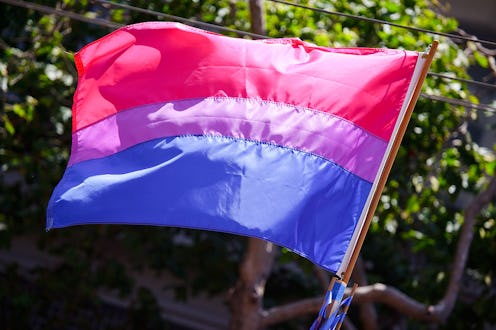Life
Bisexual People Make Up The Largest Proportion Of LGBT Americans
A new report from Pew Research Center on LGBT+ Americans takes a look at the current landscape of gender and sexuality in the United States. From shifts in demographics to shifts in societal views, the report reveals that the way our culture currently thinks about and categorizes LGBT people may not reflect the current reality. Namely, bisexual people make up the largest share of LGBT people in our country.
Roughly 1.8 percent of the overall population identified as bisexual in a 2011 analysis by UCLA. While only slightly higher than the number who identified as gay or lesbian (1.7 percent), it’s significant in conversations about who the LGBT+ population is as a whole. A 2013 poll from Pew found 40 percent of LGBT people surveyed said they were bisexual. Thirty-six percent identified as gay men and 19 percent as lesbians.
The number of people who identify as LGBTQIA+ is growing overall. A recent report from Gallup shows the proportion of LGBT people in the U.S. rose to 4.1 percent in 2016 (about 10.1 million people), which is up from 3.6 percent in 2012. However, it’s still difficult to measure exact numbers. One reason being that the U.S. Census doesn’t have questions about LGBT Americans. Another being societal stigma that is still attached to self-identifying as anything other than straight.
Overall, societal acceptance of LGBT+ people continues to grow. In 2006, 51 percent of people said that “homosexuality should be accepted by society.” In 2016, that number grew to 63 percent. However, that in turn means almost four in ten Americans still don’t think society should accept homosexuality. While growth is happening, that number is significant and arguably one of the biggest reasons people are hesitant to identify as LGBTQIA+.
People Who Are Bi Are Less Likely To Be Out Than People Who Are Gay
Despite being the biggest group within the LGBT+ population, people who are bisexual are less likely to let people in their lives know about that they’re LGBT. Only 28 percent of bisexual people surveyed in 2013 said that they’re out. This is compared to the 71 percent of gay women and 77 percent of gay men that said “all or most of the important people in their lives” know that they’re gay.
The majority of bi people who married or in a relationship have an opposite-sex partner. This is likely one contributing factor to the low number of people who are bi and out. However, being in a relationship with someone of the opposite sex doesn’t negate a person’s bisexuality. This is just one of the many misconceptions about people who are bi that further adds to people’s reluctance to publicly identify as such.
There’s a good chance you can name more people who are gay, both in the public eye and that you know personally, than people who are bi. The cultural stigma on bisexuality can be seen (or rather, not seen) in the way it is often erased from conversations about sexuality. Despite being the biggest demographic within the LGBT+ population, accurate media representation of bisexuality (or just bisexual representation at all) is difficult to come by.
Overall, Americans Are Becoming More Accepting But We Still Have Work To Do
In a 2013 poll, 92 percent of LGBT+ adults said they believed society’s acceptance of LGBT+ people has grown in the last decade. This mirrors surveys which show support for marriage equality is at an all-time high in the U.S. However, as evidenced by the previously mentioned polls on public views on sexuality, “growing acceptance” still leaves plenty of room for growth.
Currently, America is evenly split on whether we need new LGBT+ protections. Marriage equality was huge win, but it is far from the end of the road. If we need reason to make sure things like discriminatory bathroom bills don’t become law, look no further than the upcoming generation.
According to recent polls, 48 percent of Gen Z identifies as exclusively heterosexual. That’s significantly less that 65 percent of millennials who say the same. Generational ideas about gender and sexuality are shifting. Our laws and overall societal views need to change with them.
